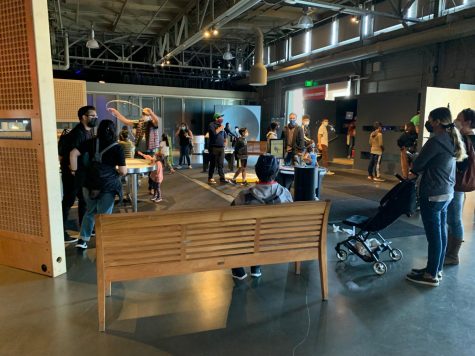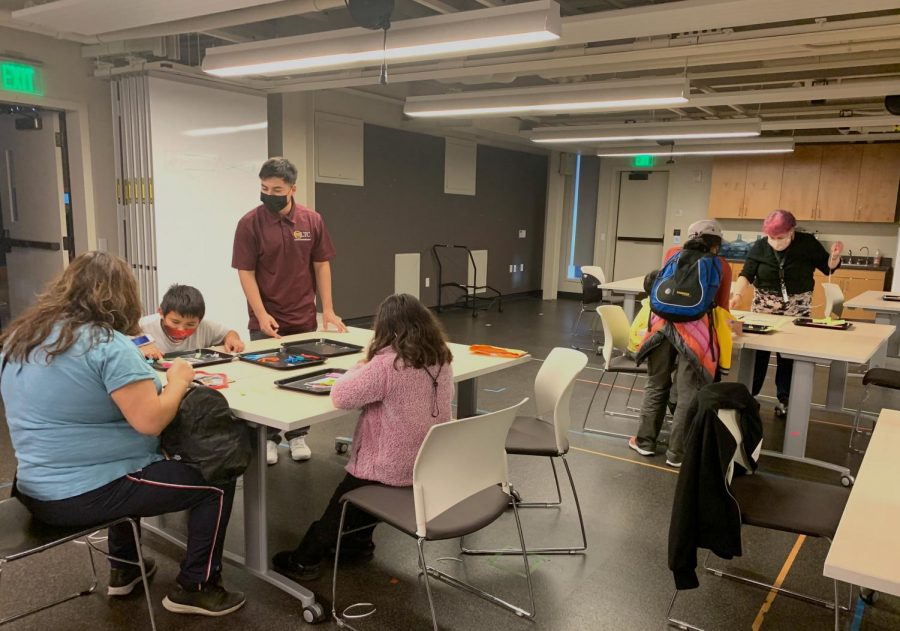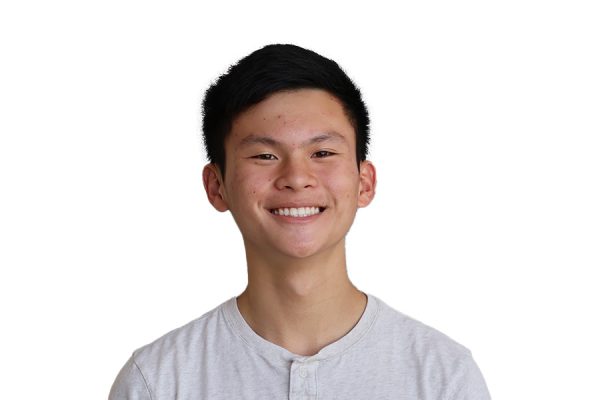Thousands spent their Sunday at San Francisco’s Exploratorium to learn from exhibits and hear from experts in science, technology, engineering, and math (STEM).
Latinx Engineering Day is hosted yearly on the last Sunday of September at the Exploratorium, with the usual museum hours.
“Every year during the Hispanic Heritage Month, we put on Latinx Engineering Day in conjunction with the Exploratorium and the Society of Hispanic Professional Engineers (SHPE), a group of Latinx college students studying engineering,” said Jim Hollis, Calculus Roundtable executive director. “They bring volunteer docents to talk to kids and show them different events; it’s a way to get families and students involved in stuff outside of the school.”
Sunday’s event is the biggest of the year, which takes two to three months for both organizations to plan.
Calculus Roundtable is a nonprofit organization that works with students of all ages and backgrounds. Specifically, they work to promote STEM education to underprivileged kids.
“It opens their minds to the possibility of looking at science and math in a different way than from the data,” Hollis said. “I think it brings a little more coolness to learning; some kids think math and science aren’t cool, so we try to bring it to places where they already know it like video games and having hands-on experience with doing it themselves.”
Additionally, Calculus Roundtable intended for teachers and students to learn from the exhibits and gain new ideas for teaching in the classroom.
“To teach children in a new and interesting way, you also have to teach teachers to implement the new interesting ways,” Hollis said. “They have to have the capacity to do more creative things with technology or virtual field trips or things that get students more engaged rather than simple worksheets.”
Small, portable stations were situated in the mirror and bubbles hall and the biology hall. Each promoted a different discipline of engineering.
Each station was not exclusive to those that registered for Latinx Engineering Day. Instead, the stations and volunteers encouraged passersby to try out the experiments.
“Don’t get deceived by the name because Latinx Engineering Day is arbitrary,” said David Flores, an electrical engineer and volunteer. “The main reason we’re here is to have kids to see to spark their interest in any STEM-related careers.”
Flores, a member of the Bay Area chapter of SHPE, rotated with other volunteers to assist with demonstrations. Bilingual volunteers kept the visitors engaged while switching between English and Spanish.

Despite not being registered for the event, many were attracted to the stations. Each station had four groups actively participating at the same time.
One of the groups, Joel and Riley Sanchez, was a father-daughter pair building a paper, nonmotorized helicopter. Sanchez hoped this event would allow many young students to realize their passions and talents.
“There’s a lot of great avenues for talented people that want to explore that profession and help shape the world, which is what good engineers do, with vision and passion,” Sanchez said.
Calculus Roundtable, SHPE, and the Exploratorium will continue to host the event and promote STEM education to less privileged communities. The event will remain in person and open to the public, even if not Latinx in origin.
“It is a free opportunity to give their students access to a world of science and high-paying careers that they can get access to,” Hollis said. “It’s fun, engaging, and we’re going to be celebrating Hispanic heritage with many of the events that we do. It’s a great outing for the whole family.”














Rosa Pissani Medina • Oct 1, 2021 at 4:34 pm
So proud of Erik, my Spanish III student.
This a great article about how a science event can incorporate languages. I like the easy reading style, specific information, clear message.
Thank you for sharing this eent, I will definitely attend this weekend.
“Muy bien Erik, sigue adelante en tus objetivos. Excelente”.